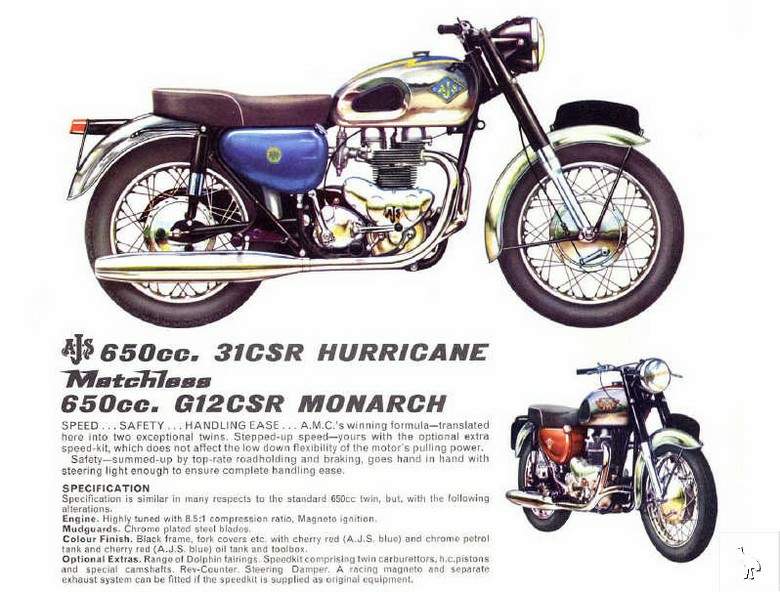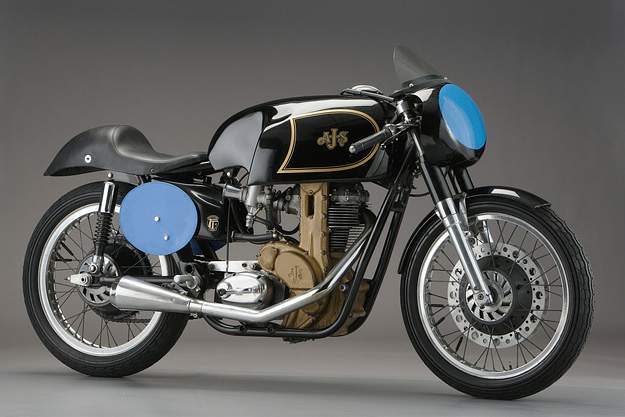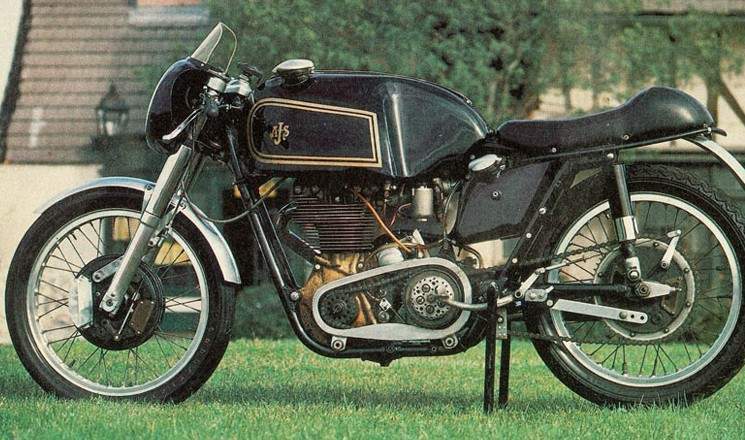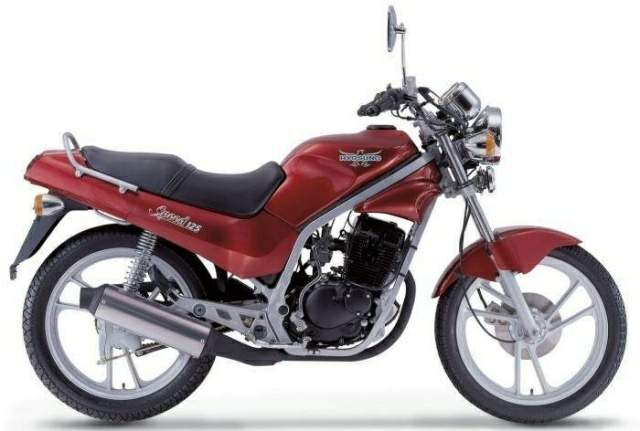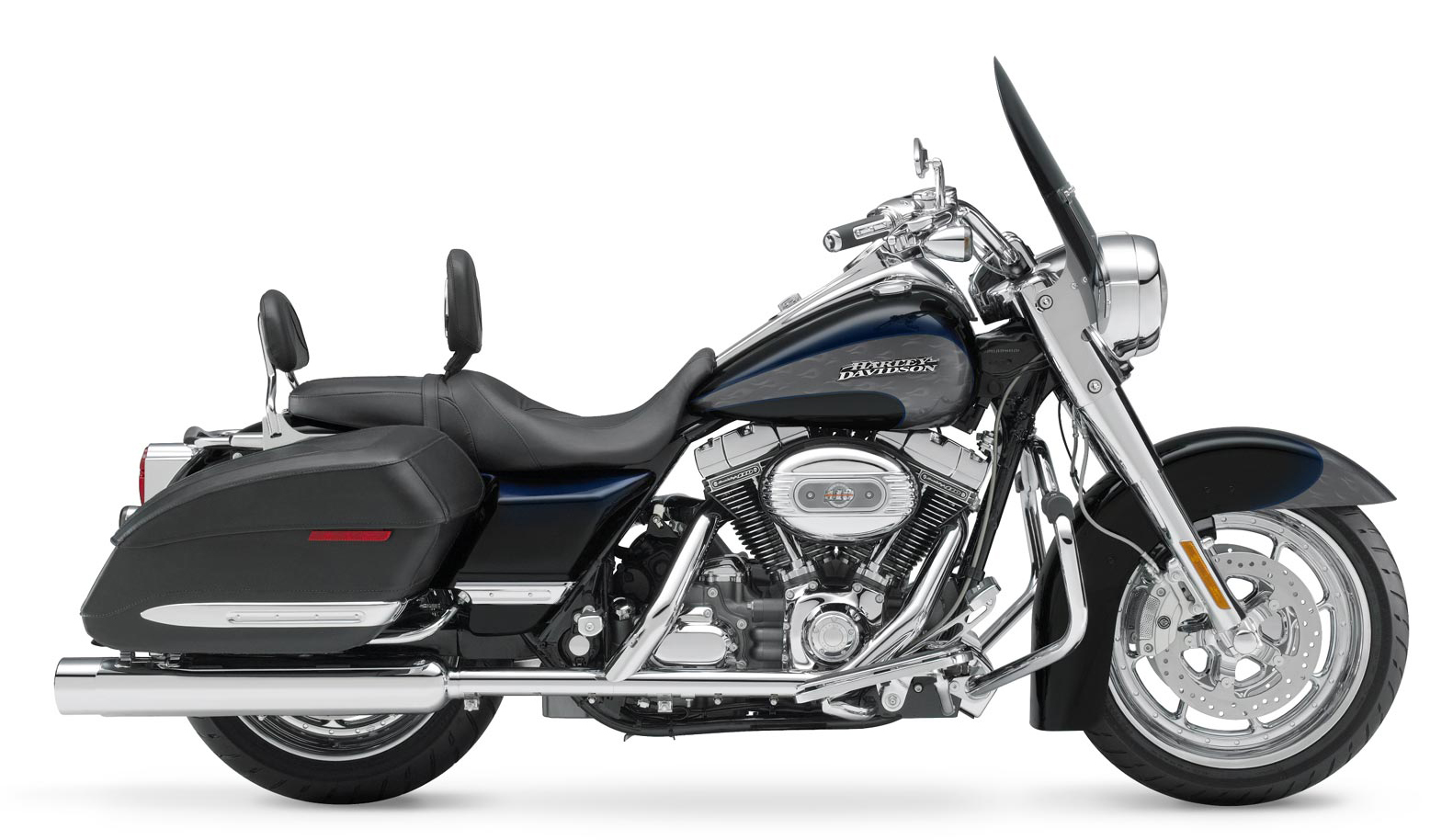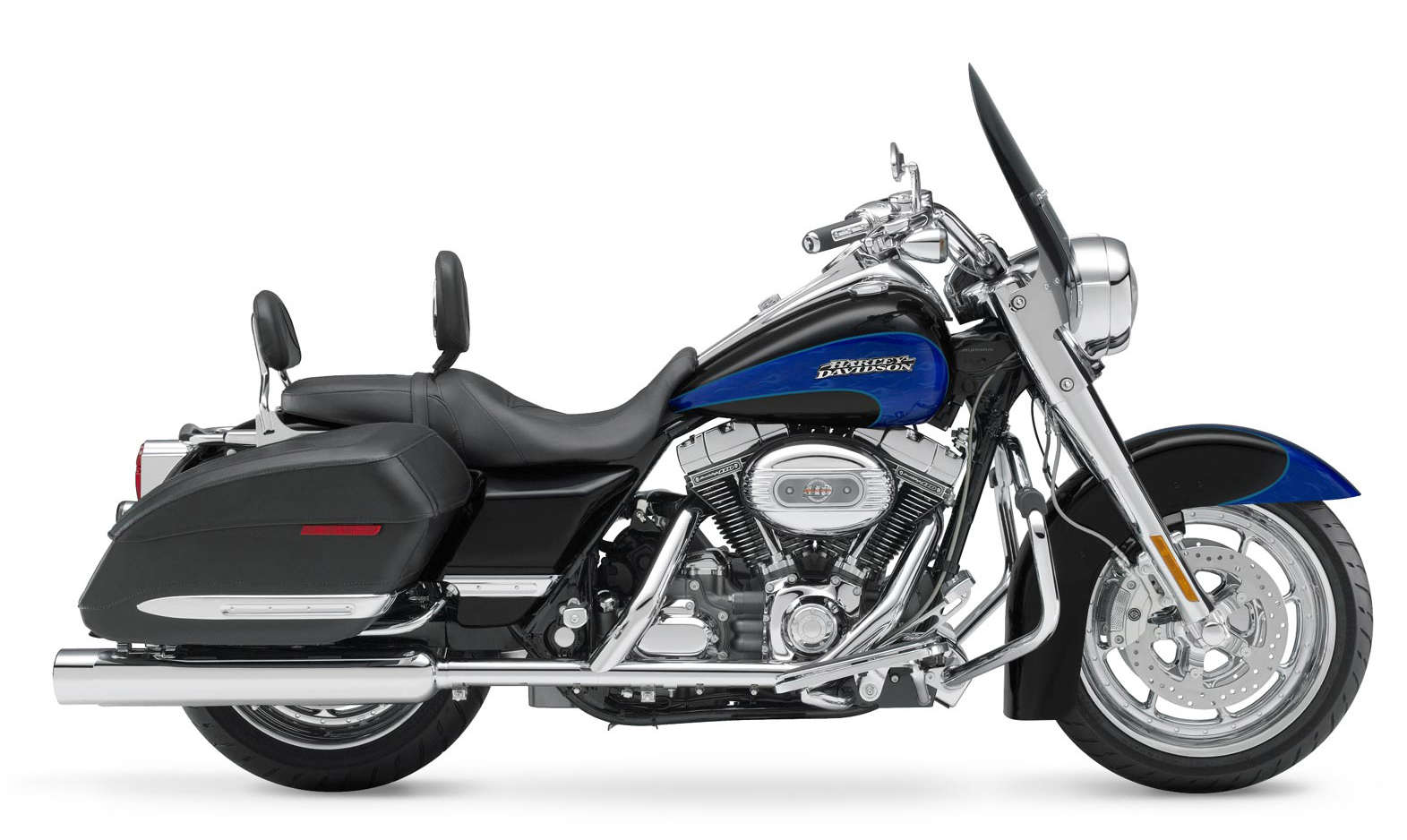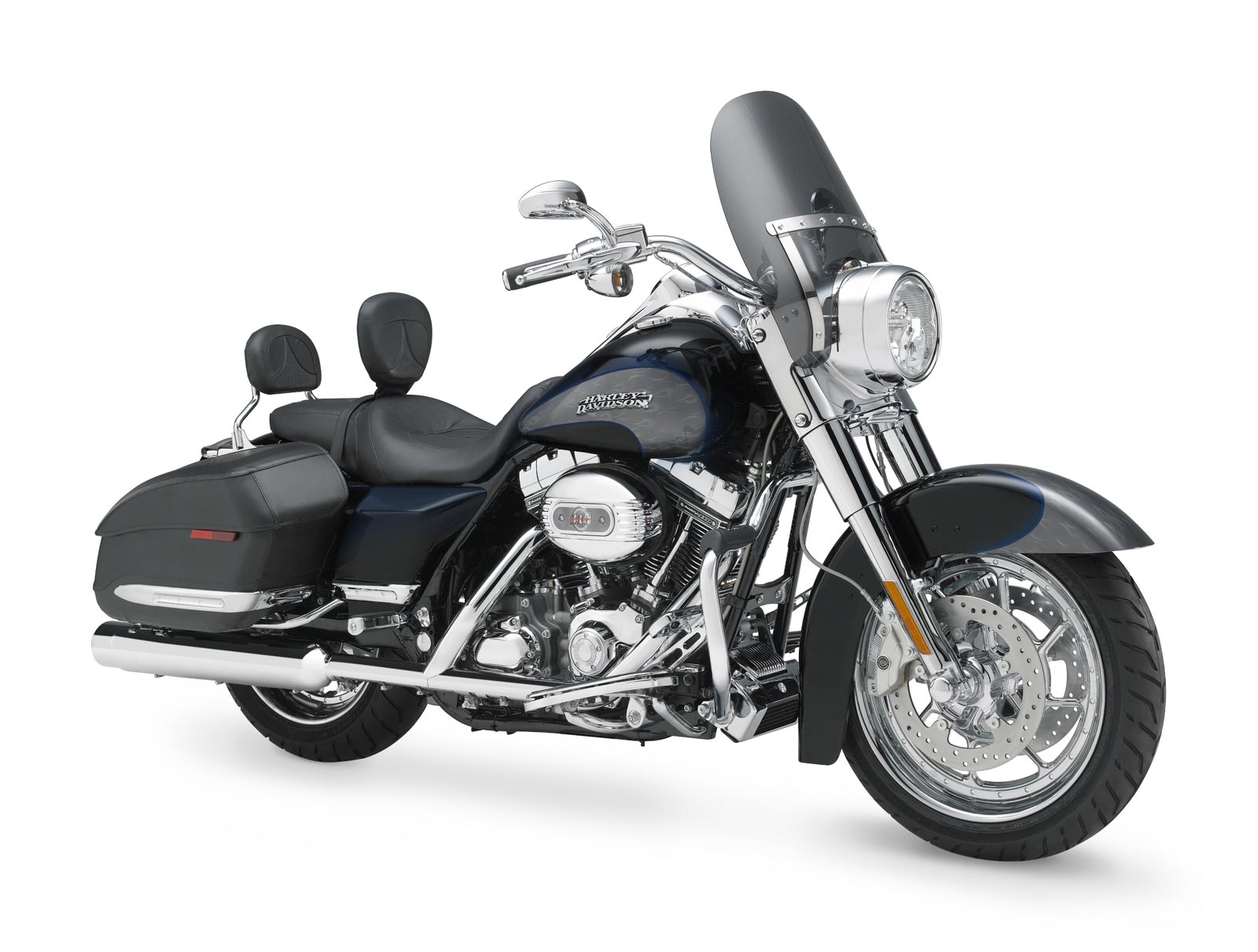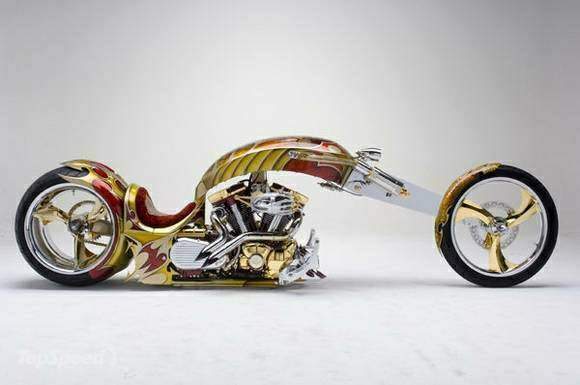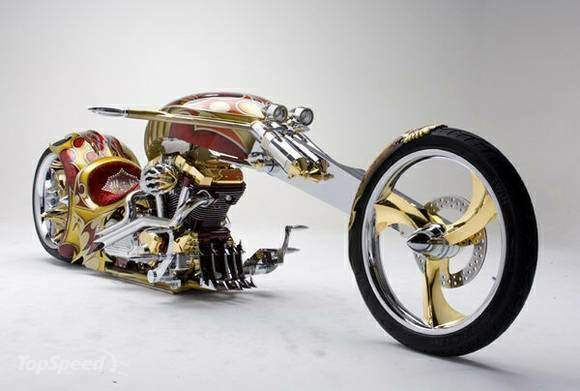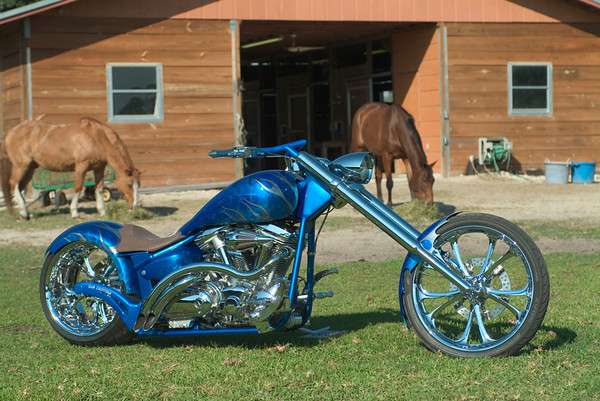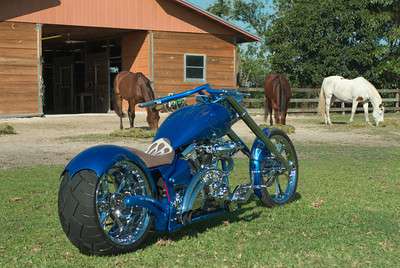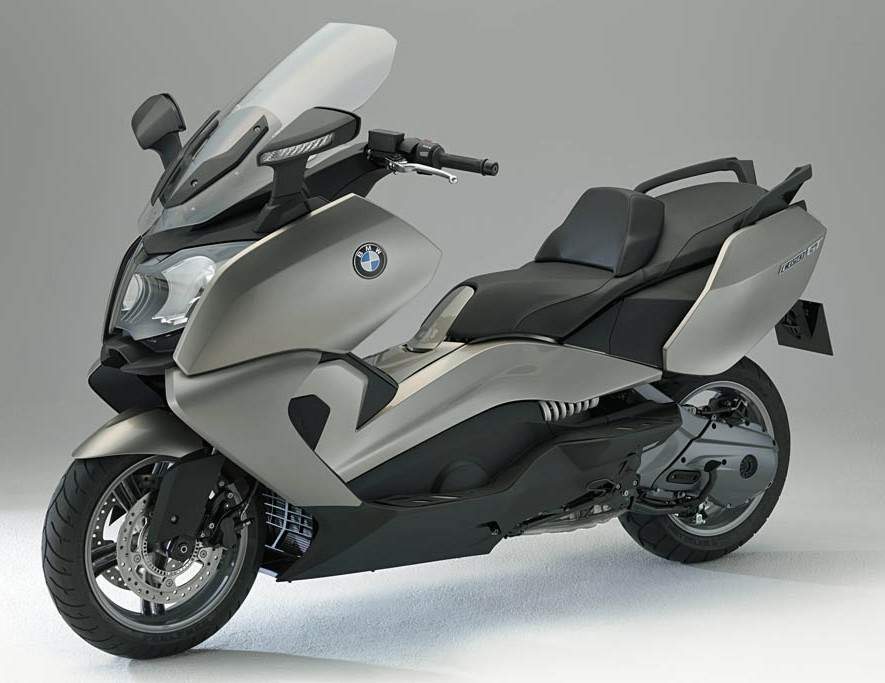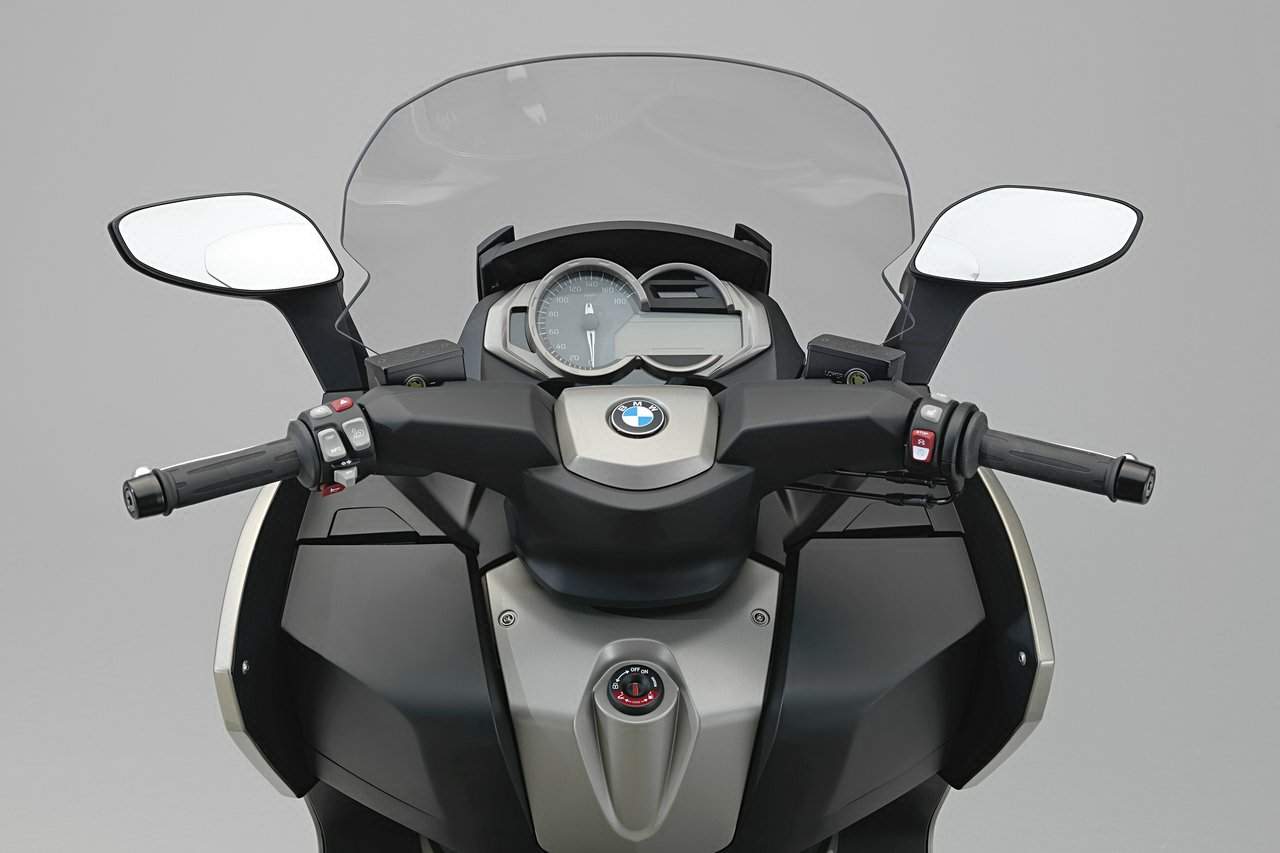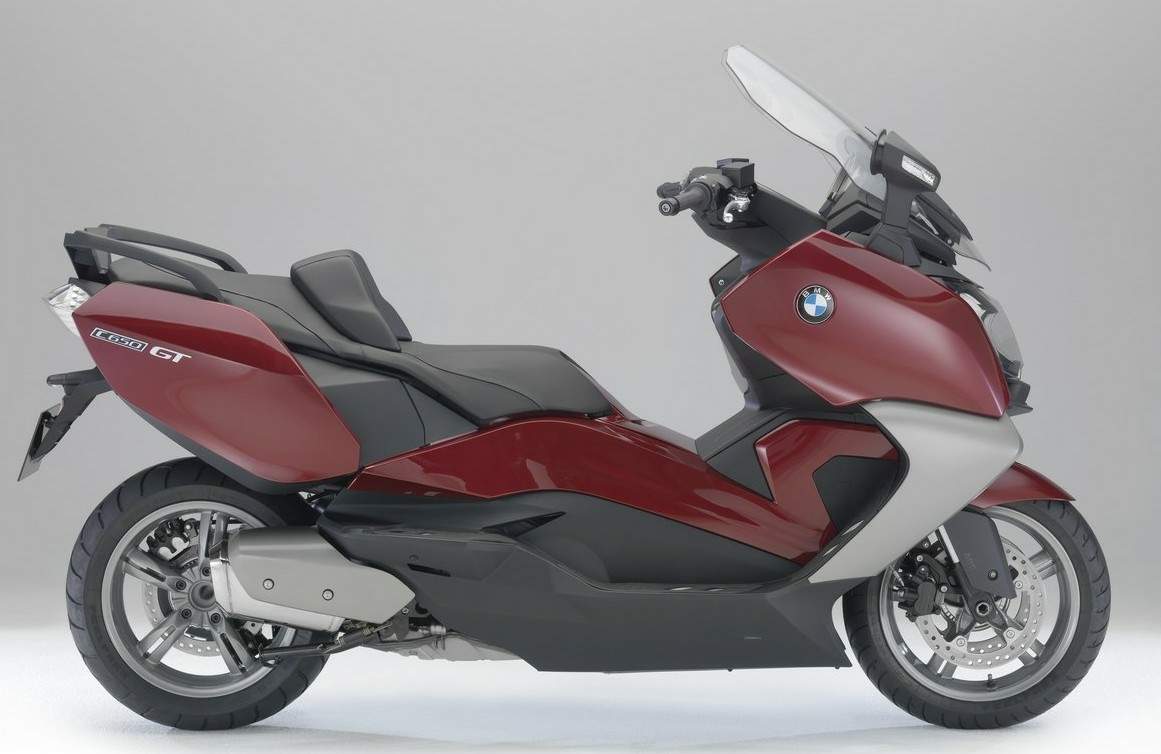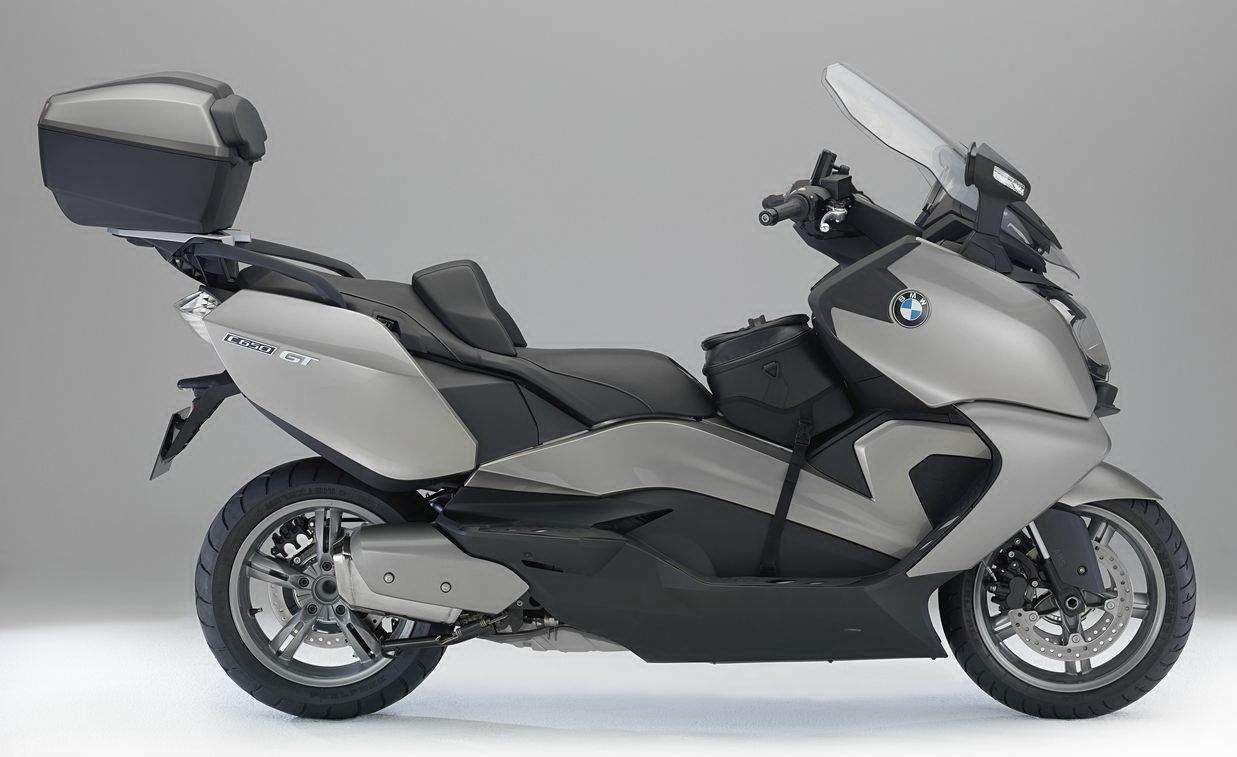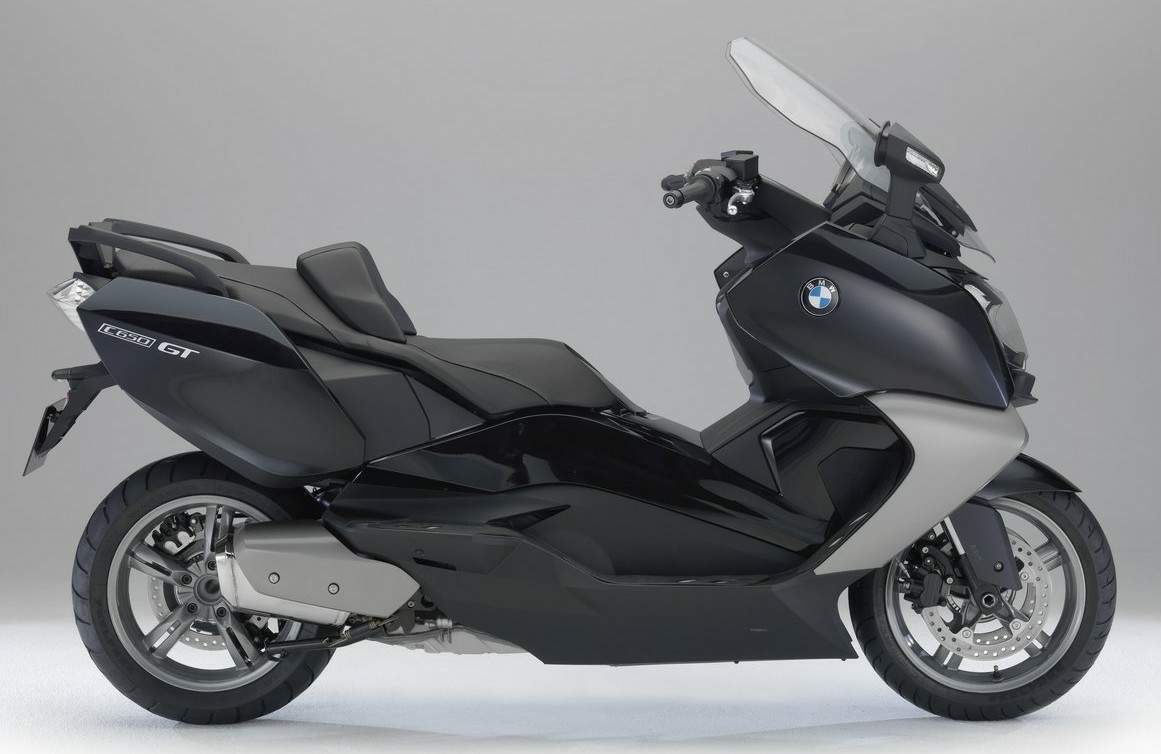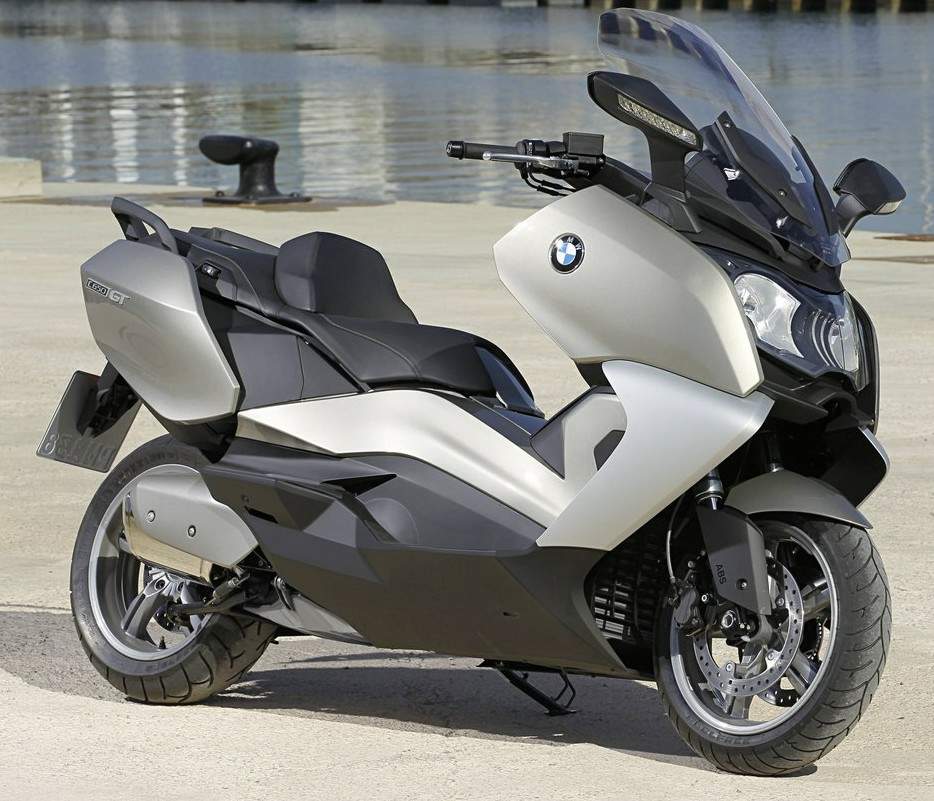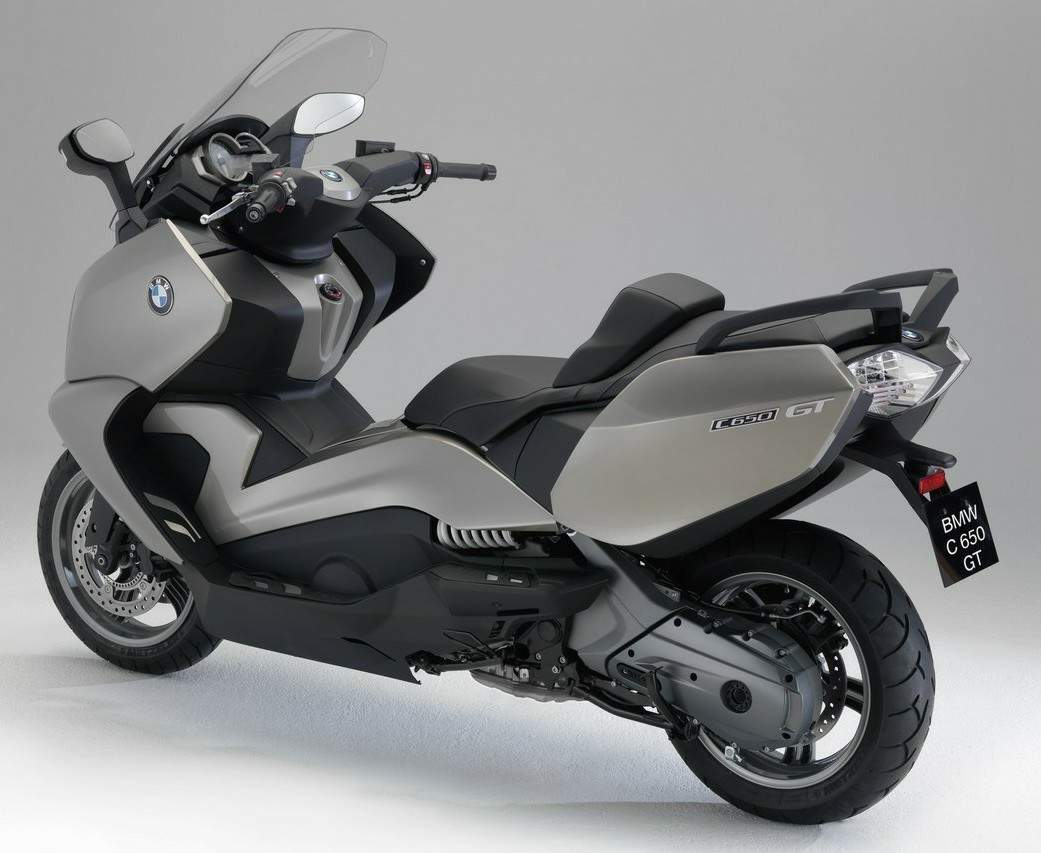AJS 7R
Built by Associated Motor Cycles? Very good indeed: It was in production and winning trophies from 1948 to 1963. Known as the “Boy Racer”, the 7R won three successive Junior Isle of Man TT races, from 1961 to 63. It was powered (occasionally underpowered, if truth be known) by a 350cc four stroke single, and designed to combat the all-conquering multi-cylinder Italian motorcycles. Which it did, very effectively, in the hands of racers like Ted Havens.
| Engine | Air-Cooled 4-st. Single OHC Triple-Camshaft |
| Displacement | 349.2cc |
| Max Power | over 40PS / 8,000rpm |
| Dry Weight | over 180kg |
Cycle World Road Test
From time to time we like to show you an exercise in style and grace which stands out from lesser breeds as a Chanel original does from discount house muu muus. (Voice from the parts room, "how many cylinders does a Chanel have?") Style is not easily acquired nor is it generally the result of a conscious effort in design: one has to look only at some of the chrome-tank English Twins of the Fifties or bloated Japanese multis to see the truth in that although everybody knows a nice girl who is as homely as the back of a bus. Still. The subject of our Salon is the AJS 7R, one of those happy marriages of circles, curves and lines that produces a harmonious whole and the daring genius who thought of gold paint (not anodized) for the mag crankcases and cam-drive tower wrought better than he knew. I am sure that the 7R riders went just a little faster because they looked nice. Perhaps that is why KTT Velocettes were so successful. At any rate the cobby lines, large tank, businesslike engine and subtle curve of the exhaust pipe give the 7R one of those unmistakeable silhouettes that bring enthusiasts on the run from the other end of the paddock. Isn't that handsome?
The 350-cc ohc "Boy's Racer". so called because it was produced as a reasonably priced customer's machine, was brought out in 1948 at a difficult period in AJS racing fortunes and although not outstandingly rapid at first, proved to be both reliable and competitive over its 14 year production run and as such, served as a nursery for many riders of international repute. In common with most English bikes, its design roots lay way in the past, in this case the celebrated "cammy" AJS introduced in 1927. The parent firm, known then as Stevens Brothers, started out in the usual way in the late 1890s fiddling with various proprietary engines but in 1909 the company decided to market what amounted to a 29cc flathead-powered motorized bicycle under the name of AJS, for Albert John Stevens (the, only brother with a middle initial) and furthermore to run it in the TT. Results were not all that remarkable but the company persevered, in 1914 bringing out an ohv 350 with an add-on gearbox giving four speeds in all. With this AJS cleaned up the 350 class, taking the 1st four places plus 6th and the company was on its way.
Development on the sly during the war ensured that Ajays were ready for the TTs immediately afterwards with an inclined-valve, hemispherical chamber 350 which, after the usual teething troubles and a bit of strategic pushing, managed to take the Junior three times on the trot. This last win, in 1922, saw the introduction of the so-called "big port" Ajay which had undergone a fairly thorough redesign with not only cams as big as their gearwheels but an exhaust port of something like 2 5/8 in., a sort of odd modification when looking at some of today's bikes but at that time fuels, compression ratios (5.75:1), cam timing etc. may have dictated different ideas about scavenging. At any rate these early models are still recherche among vintage freaks. The following years showed that inventive minds were working at the factory, what with the introduction of aluminum heads with cast-in bronze seats, foot pedals for both internal expanding brakes to leave the driver's hands free for his multitude of hand levers (including throttle!), dry sump lubrication, and even going modern to the inlet valve becoming larger than the exhaust. At the same time, the racers still featured a foot-operated oil pump most of the time as well as the cylinder head being held down by a sort of strap or stirrup. At any rate, Ajays were still racing energetically and placing but not coming up with wins in the TT, a significant barometer of success to the buying public in those palmy days. Following an ohc Velocette's win in 1926 a new machine was brought out in '27 with chain-operated ohc (three rockers for two valves at 900), dry sump, and proper four-speed gearbox still controlled by a hand change. This was the first of the "7" series which, after a slowish start, won many laurels up through the years in 250, 350 and slightly overbored even in the Senior. Numerous modifications were made including getting rid of the extra rocker and their success even might have been greater but for failures of accessory components. Isn't it always the way.
Racing is expensive, however, as a number of manufacturers have found out and in a marked period of short money (1931) the Stevens brothers went bust and the factory was sold to Matchless. Development went on, including production of a recordbreaking (would-be) Twin and a Four which could be supercharged and in fact was raced in that form, one of that type doing a 100 mph lap (Walter Rusk up) in Ulster. Emphasis thus swung over to bigger bikes, though without much luck in racing due to a rather limited development budget. In fact the famous but unlucky Porcupine Twin was originally designed as a "blown" bike but was forced to run with carburetors due to the usual FIM policy change after the 1941 war. In this form it did win some races but mostly showed a lot more weight than was really needed. With all the real hotshots from Europe now appearing on the scene, AJS then thought that it was time to resurrect the cammy 350 and as noted, brought it out in 1948. Considerably more modern than its predecessor, if you can say that about any English hike, the 7R was raced, fairly successfully by works riders of the caliber of Les Graham, Bill Doran, Reg Armstrong ad infinitum against the likes of Foster and Frith (Velocettes) plus Bell and Lockett (Nortons) with equivocal results for what amounted to a new design… mostly. As the years wore on development began to give rewards and positive successes were notched both by the works and the myriad private owners, especially as Velocettes were now on the verge of becoming "orphans". In an effort to drag more power out of the 7R, in 1952 AJS brought out a triple knocker version with three valves, two of them exhaust (back to the Big Port syndrome!) which were worked by a geared layshaft running off the inlet camshaft, that lucky object taking the drive direct from the cam chain. This version was quite rapid and took some 13 world's records at Montlhery in 1952, including the Hour at 115.66 mph. Furthermore, New Zealander Rod .Coleman finally won the Junior TT on one, teammates finishing second and fourth, and hopes began to be expressed that the 7R 3A would also be put into limited production along side its single cam brother. But this was not to be, Matchless's directors showing the same far-sightedness that led to the collapse of most of England's motorcycle factories. To be sure, the Matchless G45 and G50, both derived from Ajays, made one small attack more upon the scene but the foreign multis were upon them and in 1962, manufacture of the beloved 7R ceased, to be followed four years later by the collapse of AMC (the parent firm) and its swallowing up by Dennis Poore's Manganese Bronze Holdings, for all the good that did
A lack of signal success in the TTs did not necessarily mean that a bike was no good. Both Norton and Velocette had been doing the Island for years, having the requirements absolutely taped as Harley does the dirt tracks over here, and also took care to retain Island specialists who could and did go around at 100 mph (like the legendary Harold Daniell) when you couldn't see your hand before the face. The 7R was put out as a customer's racer primarily, which meant that the ultimate Nth wasn't dragged out of it; in a company where development costs were somewhat limited, most of the money allotted went to the turkey Porcupine. However 7Rs were quite often found among the works runners at the TT in a good place and in the hundreds of small Continental and English contests where the owner-driver-mechanic had to live out of his van, the robust qualities and good handling resulted in many victories. Fastest lap is all very well but the checkered flag counts.
This particular example is a 1956 model updated to 1961 specs, owned by William A. Bass III, a consulting engineer of Long Beach, Calif. The machine was imported from England some time in 1956, possibly bought new, and after some racing and passing through several sets of kind hands (the bike is unrestored except for the tank) was snatched up by Bill to join the other goodies in his garage. Fundamentally the 7R engine is a Single (!) with an almost square bore and stroke ratio (75.5 x 78 mm) giving something like 42 bhp at 7800 rpm. The bottom end is rather sturdy with smallish flywheels to cut oil drag and a caged roller bearing on the big-end of the forged steel rod although a titanium one was used occasionally. Piston is a full-skirted four, ring Specialloid model with cutouts in the slightly domed top and the rh crankpin drives two oil pumps plus a Weller-tensioned chain up to the camshaft. The light-alloy cylinder has an austenitic iron liner shrunk into it but the head, the heart of any racing engine, shows most of the trick 'work. Of the same light alloy with shrunk-in aluminum bronze or austenitic iron valve seats (inlet and exhaust respectively) the camboxes have pits for the mousetrap valve springs, Terry usually. By 1953 roller tappets were fitted on the two rockers and a lot of concentrated work by engineer and former TT rider C.J. Williams on the head before the 1956 series improved it tremendously. The engine was originally meant to run on postwar "Pool" petrol which was about like Mexican regular gas and thus C.R came out something like 8:1. With the advent of better fuels or even alky (Bill's 7R likes either Avgas or methanol) Mr. Williams airflowed the head by one of those primitive test-rigs that the Poms seem to specialize in and came to the conclusion that a slightly down-swept port shape gave better mixing, a 13 1/8 in. long inlet tract reduced megaphonitis, a 13/8 Amal was just the ticket and a squish pattern head enabled CR to be raised to 12.2:1. Power all through the range as well as improved fuel consumption was the result.
Externally the 7R doesn't look too much different from its predecessors but in fact the "new" frame holds the mag crankcases more firmly, the vibration-producing alloy brace from the engine to the top of the gearbox has been replaced with a decent steel one, the giant early megaphone which resulted in about a 500 rpm power band was replaced with a smaller reverse cone mega, and the fade-prone "jampot" rear shocks went to wherever old shocks go and Girlings took their place. The lovely tank with cutouts for knees is held by an adjustable strap across the top (to allow for fitting sprint tanks) and holds a useful 5 gallons while the similarly contoured dry-sump oil tank takes 7 pints; these are probably Imperial measurements and in the US we can squeeze a bit more in. Front suspension is looked after by AJS Teledraulic forks which seemed to work all right. I asked a Knowledgeable Person whether Norton forks were ever fitted as they were on many of the Triumph GPs and he said that the Norton ones were too heavy; one of the main advantages of the 7R was its comparatively light weight of 285 lb. and no wonder with mag crankcases, cam boxes, timing cover, chain cover and hubs at both ends. Gearbox of course was a four-speed Burman with final drive of 4.87, it is no good going into sprockets as they have probably been modified endless times, and the dry clutch, exposed on the left side, is a multiplate Ferodo-faced unit familiar to all by the fish-factory smell it makes when slipped. Also in the English tradition are the difficult to find 19 in. wheels fitted with Goodyears front (3.0019 although 2.75 is recommended) and rear (3.50-19 although 3.25 ditto).
I wasn't about to ride the 7R in the teeming spaces around the Queen Mary, especially with a rather loud megaphone fitted, so we have to rely on the impressions of owner Bass. He states that the bike is absolutely delightful and handles "like a Ducati" which must make both Italians and English feel happy. Under way the Ajay is smooth, light and agile, being able to be flicked about, and the brakes in moment of stress are v good for non discs. Like all small-capacity racing engines, the Single is extremely peaky and at low rpm will hardly pull its own weight, necessitating a lot of clutch slip (perhaps that's why the IOM start is downhill) but commences coming on the pipe to give some useful power at around 5800, pulling strongly from then on to redline at 7400. His top speed at the present gearing he has calculated at around 120 mph well tucked in and the Lucas rotating armature mag manages to keep up with that… or has in the past although he confides that at the last Vintage meeting at Laguna Seca he had a feeling that the Prince of Darkness better have his brushes changed. Starting drill is also normal practice; tickle the hell out of it, retard the spark, bump back onto compression, snick into low gear, pull in the clutch and run like anything, preferably with the aid of a few friends, and leap aboard. A hot plug (usually a B6ES) is usually fitted for warmup and something rather colder, one of Champion's Gold Palladium range, fitted for serious work |
